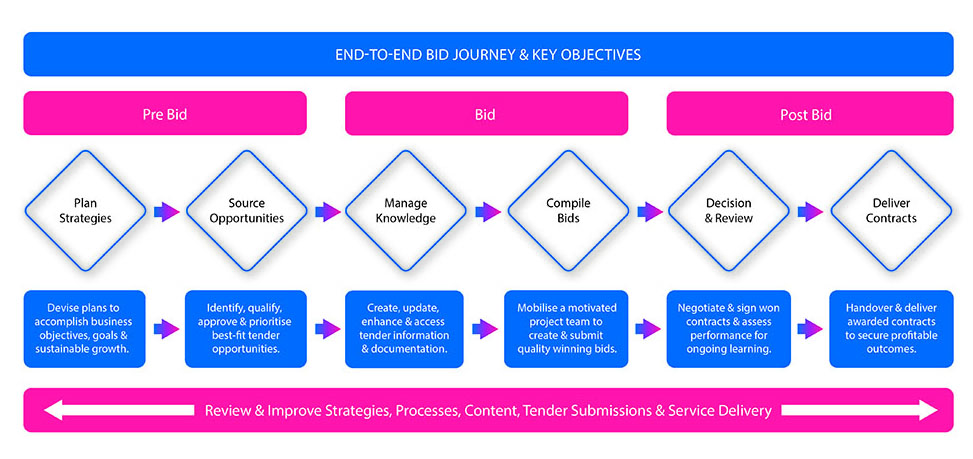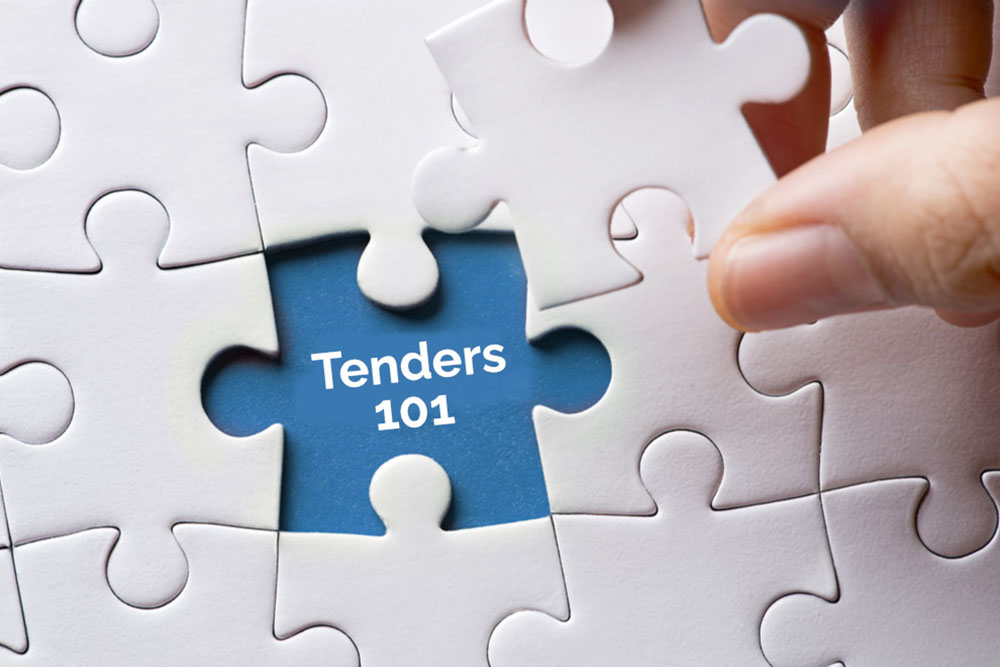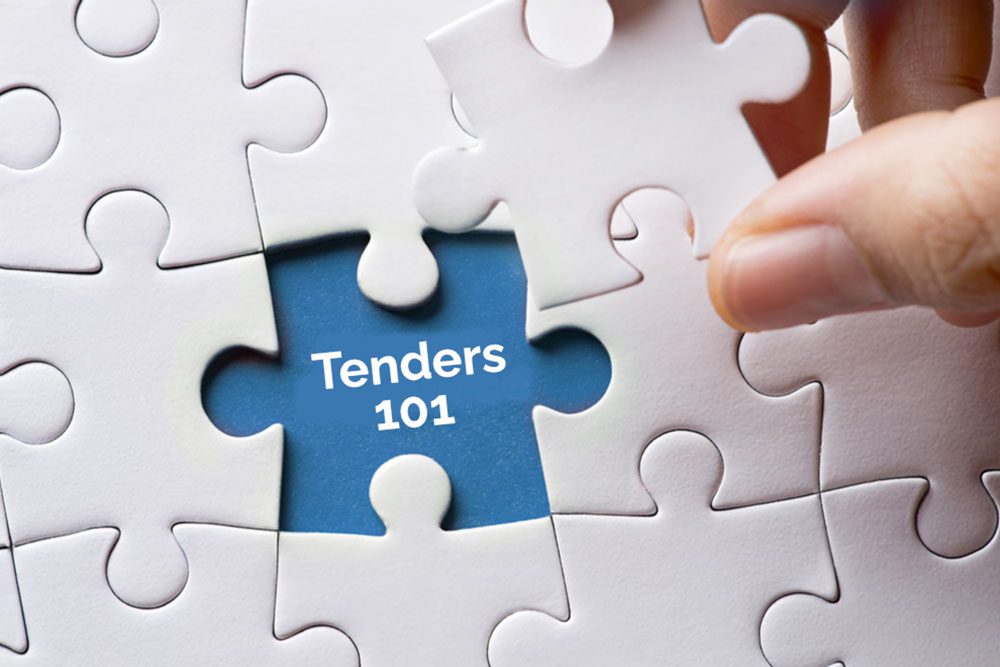Bid Process Management consists of managing the activities a supplier undertakes when tendering for public and private contracts.
This is a highly complex activity given the multiple teams, numerous tasks and volume of content involved.
In this article we break down the bid process into 6 distinct elements covering pre-bid, bid and post bid stages. We highlight the main objectives, key activities and stakeholders involved. Plus discuss the challenges and potential impacts on tender submission quality and outcomes.
Lastly, we look at ways to address bid process management challenges and impacts, including the technology used to support the bid process.
Bid Process Management Stages
The diagram below provides a breakdown of the main stages of the bid journey which are discussed below.

1) Pre-Bid Stage: Plan Strategies
To develop bid strategies that adhere to and achieve business objectives, financial goals and sustainable growth. Activities that need to be managed include:
- Compiling and analysing market, competitor and performance data
- Identifying and assessing threats, opportunities and new trends
- Developing and defining objectives, strategies and financial goals
- Sharing, communicating and ensuring strategic plans are delivered
- Monitoring results and responding to shortfalls and market changes.
Main Challenges & Impacts
Developing robust bid strategies is essential to the success of your bid process management, activities and securing high-value contract wins. This requires a full understanding of your bidding universe, competitors, threats and opportunities.
This is very much dependent on having good data and intelligence to analyse and gain insight. However, historically, access to comprehensive data for market and bidding performance insight has been scarce. Compiling data from Public Procurement Portals is difficult, time-consuming and impractical.
This leaves many businesses having incorrect perceptions on market share, competition and win/loss rates etc. As well as relying on hearsay, limited tacit or second-hand intelligence to make these critical decisions.
This can lead to poor decision-making and weak or mis-directed bid strategies.
The ability to be agile to market changes, new threats and opportunities will be difficult to manage resulting in significant impact on resources and financial goals.
“48 percent of leaders spend less than one day per month discussing strategy.” Harvard Business School
Bid Process Management Improvements
Having a deep understanding of your bid universe is vital to making well-informed strategic decisions. Relying on perception and limited factual knowledge can be detrimental. For example, believing your market share is higher than it is or that you are ahead of your competition in a certain product category.
Being vigilant to market, client and competitor changes is also vital to remain agile to new threats and opportunities. Consider:
- Undertake audit of your available insights data and look to external sources (e.g. TenderEyes Market Insights) for deeper understanding
- Program in time to development bid strategies and regularly review and amend as necessary
- Involve stakeholders from different disciplines to secure wider viewpoints and insights
- Ensure bid strategies are aligned to the wider business objectives and goals
- Clearly communicate and educate all bid contributors on your bid strategies and alert them to changes when instigated.
2) Pre-Bid Stage: Source Tender Opportunities
To identify, qualify, approve and prioritise your best-fit tender opportunities. Activities that need to be managed include:
- Setting targeting strategies and search criteria (e.g. CPV Codes)
- Pre-qualifying contract notices for qualification action
- Qualifying opportunities for bid or no bid action
- Securing approvals and sign-off for tender pursuit action
- Managing bid pipeline, forecasting and reporting.
Main Challenges & Impacts
Although sourcing tenders could be considered as a straightforward activity, it can in fact, be challenging on many levels. This includes the:
- Strength and consistency of targeting strategies
- Methods used to search Tender Portals for opportunities
- Tools used to receive and assess Contract Notices for qualification action
- Strength of qualification process and criteria
- Speed of bid, not to bid decisions and approvals
- Quality of handover to bid team for action.
Any of these areas are susceptible to working inefficiencies, time delays and poor decision-making.
Any roadblocks or challenges in this early stage can severely impact your bid process management, later stages of the bid journey, the quality of tender submissions and win rates.
Best-fit opportunities may be missed or not given top priority. While a ‘bid for everything’ mentality will make it much harder for Bid Teams and Subject Matter Experts to deliver compelling and convincing tender submissions for mis-matched opportunities.
Bid Process Management Improvements
It is important to negate any workflow inefficiencies and unnecessary delays in this stage of the bid journey as well as qualify only your best-fit tenders with strong win probabilities.
This will help the Bid Team and Subject Matter Experts the best foundation for compiling and finessing tender submissions. Consider:
- Streamlining the method of sourcing and managing Contract Notices and opportunities
- Regularly reviewing procurement codes and keywords for filtering and sourcing best-fit Contract Notices
- Implementing a formal qualification process and evaluation criteria – such as NEAT, SCOTSMAN or the TenderEyes 4 Cs Model
- Adopting a formal approval process and ensuring Approvers have access to relevant information.
3) Bid Stage: Manage Tender Content
To create, update, enhance and easily access tender information, documentation and content. Activities that need to be managed include:
- Assessing content requirements and assigning to Subject Matter Experts
- Compiling corporate information, images and documentation
- Identifying standard tender questions and building responses
- Regularly reviewing, updating and improving content.
Main Challenges & Impacts
Quality information and content is essential to delivering winning tender submissions. But managing the vast volume and variety of data involved is a huge challenge for any business, especially where a central repository or Bid Library is unavailable.
Valuable time can be easily wasted sourcing content especially where different teams, platforms and formats are involved. It can also be challenging to determine if content is up-to-date and accurate.
Securing contributions from Subject Matter Experts within timescales can be testing, especially if they are given short notice and little context of what’s required.
Lack of content ownership, review and updating can result in poor quality, inaccurate or expired content being used in tender submissions. Bid Teams may, out of necessity, reuse previous poor scoring tender responses or rush to create new ones. With tender evaluations and outcomes remaining unchanged or unimproved.
Inaccurate or out-of-date content within tender submissions can also open the business up to reputational and financial risks, especially when the bid is won. You are committed to delivering what you said you would or potentially not being able to deliver if information is incorrect.
“Over half of businesses surveyed reported that 25% or more of their revenue was affected by data quality issues.” Wakefield Research
Bid Process Management Improvements
This can be the most frustrating part of the Bid Journey, so it’s imperative to look at making the creation, updating, improvement and access to standard tender content and documentation much easier and quicker. Consider:
- Undertaking an audit of existing content, assessing gaps and building a comprehensive set of content and Q&As commonly required for all tenders
- Building a Bid Library as an easily accessible central resource
- Assigning ownership and updating responsibilities for each piece of content
- Implementing tools that provide sophisticated search and return functions
- Adopting tools that can auto-populate content reducing time-consuming, manual cut & paste activities
- Undertaking regular content reviews to ensure updating and improvements take place
- Test content and Q&As against returned evaluation scores and internal evaluation criteria such as the TenderEyes 4 Cs Model.
4) Bid Stage: Compile Tender Responses
To rapidly mobilise a motivated project team to create and submit quality winning bids. Activities that need to be managed include:
- Setting up projects, assigning team and running kick-off meetings
- Assessing client needs, evaluation criteria and tender questions
- Managing partner and contractor contributions
- Assigning tasks, information requests and tracking progress
- Compiling, testing and finessing tender responses
- Reviewing responses, securing approvals and submitting bids.
Main Challenges and Impacts
This is the most crucial stage of the bid journey and is open to a wide variety of challenges, given the complexity of activities, people and tight timescales involved.
Difficulties in project mobilisation and task setting can cause unnecessary delays and added pressure. Without proper Sales to Bid Team handover or clearly assigned project roles and responsibilities, contributors’ engagement and commitment may be a challenge.
Delays in previous stages may result in limited time to properly assess and understand the intricacies of procurement agency questions, evaluation and scoring criteria. This can lead to poorly constructed tender responses that do not address question nuances or optimise for securing the highest scores.
Undertaking continual and repeated manual activities, such as task setting, sending reminders and compiling tender responses can be frustrating and time-consuming.
Keeping track of project schedules and task completions can be extremely difficult, especially if working in spreadsheets and communicating via email. Identifying project roadblocks or resource issues may be missed, or resolutions delayed.
This can lead to limited team collaboration and rushed tender responses. Time may be limited to thoroughly review, test, improve and approve tender responses before submission. This may result in low scoring tender responses and win probabilities.
Bid Process Management Improvements
This the most complex and critical part stage of the bid journey requires strong project management and coordination to ensure quality bids are delivered within tight timescales. Consider:
- Automation of project set up including stakeholder notifications, information and documentation population, tasks assignment, kick off and progress meetings etc
- Gaining clear and easy visibility to project timelines and tasks to more easily manage information gathering, roadblocks and deadlines
- Program of engagement and education with stakeholders to ensure full commitment to delivering compliant, competitive, compelling and convincing tender submissions each time
- Easy access to relevant tender information (e.g. win themes and risks), plus procurement agency documentation, evaluation criteria and questions
Tools for quick and easier content search and auto-creation - Formal and agile approvals and sign off process.
5) Post-Bid Stage: Decision and Review
To negotiate & sign won contracts & assess performance and all outcomes (wins and losses) for ongoing learning. Activities that need to be managed include:
- Assessing performance and improving processes
- Receiving and reviewing client decisions and feedback
- Negotiating and signing contract documents
- Analysing won and lost outcomes and scores
- Improving responses for future tenders.
Main Challenges and Impacts
With so many resources, money and time invested in your bidding activities it is crucial to ensure return on investment and results are where you need them to be.
If there is little or no access to project data, the review process can be challenging and areas of inefficiency, roadblocks or delays hard to identify.
It is equally important to monitor and assess won and lost outcomes and individual tender scores. But with new tenders requiring attention this activity may fall by the wayside or given limited attention. Valuable feedback and ideas from all bid contributors may remain undisclosed and potential opportunities for improvements lost.
This can lead to decreased win rates, as well as a loss in team morale and commitment to the bidding process.
While it is important to celebrate won tenders, negotiating terms and conditions and signing contracts is vital to the success of the project. Keeping track of vital information, discussions and documentation can be difficult and cause potential problems during later contracts delivery.
Bid Process Management Improvements
Whether won or lost, learning can be taken from every bid. It is vital to allocate time and resource to regularly review activity and results to identify gaps and areas for bid process management improvement. Consider:
- Record won contract negotiations, terms and conditions and centrally store final tender submissions and signed contracts for future easy access
- Assign responsibilities and time for process and performance reviews of tender projects post submission
- Record evaluation scores against Q&As for easy review and identification of poor-quality responses and implement content improvements
- Seek formal feedback and ideas from all bid activity contributors for ongoing engagement and improvement
- Monitor and review market share, competitors, client needs and win / loss rates to stay agile to changing requirements, opportunities and threats
- Adopt business analytics tools to easily review performance and results for deeper more accurate insight.
6) Post-Bid Stage: Deliver Contracts
To handover and deliver awarded contracts to secure profitable outcomes. Activities that need to be managed include:
- Mobilising and briefing contracts delivery teams
- Managing risks, KPls, contract changes and pricing
- Liaising with clients and managing scheduling and delivery
- Engaging and managing partners and contractors
- Reviewing and improving performance and results.
Main Challenges and Impacts
This the final stage of the bid journey is open to the most reputational and financial risks. So, it is imperative that this is managed effectively.
Poor handover of final tender documents and agreed contracts to the Delivery Team can cause confusion and poor decision making.
Without strong project management and coordination, difficulties may occur in assigning roles and tasks, scheduling and liaison with third party suppliers. Without accurate records any issues or delays may be hard to identify and resolve quickly.
This can lead to mismanagement of client expectations and put project completion dates at risk. This may result in longer term client dissatisfaction and incur financial penalties. As well as put into doubt your capabilities to meet project targets or be considered for future potential work.
Bid Process Management Improvements
Improvements at this stage are very similar to the ‘compile tenders’ stage, requiring strong project management to deliver successful contracts. Consider
- Automatic project set up and population of relevant tender and contract information and documentation
- Automatic role and tasks assignments and invites to kick-off and progress meetings
- Adoption of formal contract management methodologies and stages
- Ways to record instructions and communications with partners and sub-contractors to ensure contracted services are delivered on time and to specification
- Easy tracking and visibility of project schedules and tasks for rapid issue resolution
- Recording and tracking of client engagement, communications and feedback for future.
Technology’s Role in Bid Process Management
A significant impact on the quality and efficiency of your bid process management will be the tools you use. Many businesses are still reliant on spreadsheets, email or generic project management and collaboration tools to coordinate activities and tasks. In addition, content remains in data silos and is difficult to source and rely on.
This, then makes it even more challenging to successfully manage the bid process and consistently deliver and improve tender submissions.
Adopting a dedicated Bid Management solution, such as TenderEyes, provides a fully integrated efficient workflow for the whole bid journey from start to finish, from strategy planning to contracts delivery.
Powerful tools designed for each stage for the bid journey deliver efficient working practices, better collaboration and time to finesse tender submissions. Leading to improved valuation scores and increased win rates.










